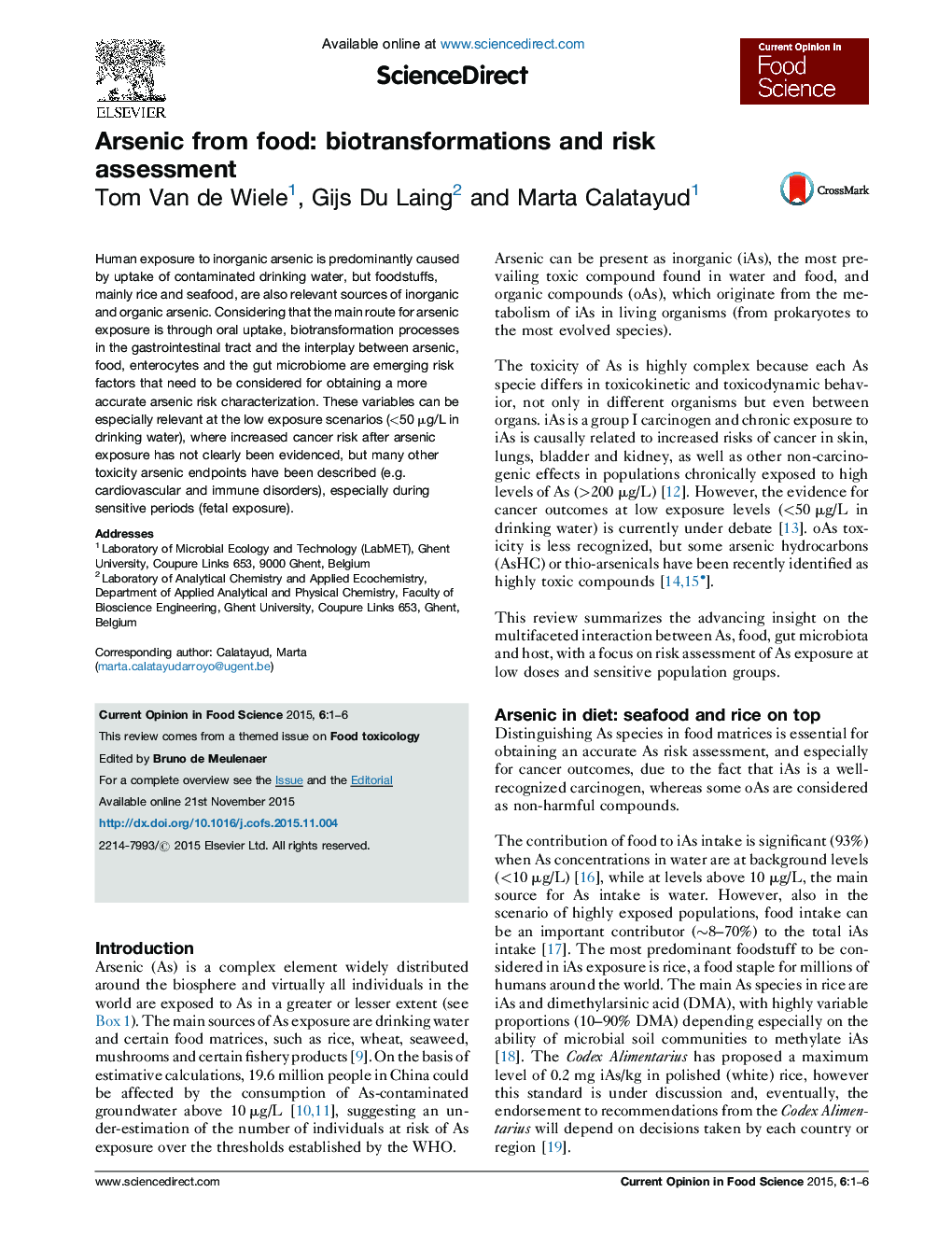| Article ID | Journal | Published Year | Pages | File Type |
|---|---|---|---|---|
| 2079671 | Current Opinion in Food Science | 2015 | 6 Pages |
•Reducing inorganic arsenic in drinking water is a worldwide priority.•Low doses of arsenic require further risk characterization.•Arsenic exposure from food burden the number of cancer worldwide.•Different groups of population need specific risk assessment.•Gut microbiome is a risk factor which can be involved in arsenic toxicity.
Human exposure to inorganic arsenic is predominantly caused by uptake of contaminated drinking water, but foodstuffs, mainly rice and seafood, are also relevant sources of inorganic and organic arsenic. Considering that the main route for arsenic exposure is through oral uptake, biotransformation processes in the gastrointestinal tract and the interplay between arsenic, food, enterocytes and the gut microbiome are emerging risk factors that need to be considered for obtaining a more accurate arsenic risk characterization. These variables can be especially relevant at the low exposure scenarios (<50 μg/L in drinking water), where increased cancer risk after arsenic exposure has not clearly been evidenced, but many other toxicity arsenic endpoints have been described (e.g. cardiovascular and immune disorders), especially during sensitive periods (fetal exposure).
Graphical abstractFigure optionsDownload full-size imageDownload as PowerPoint slide
